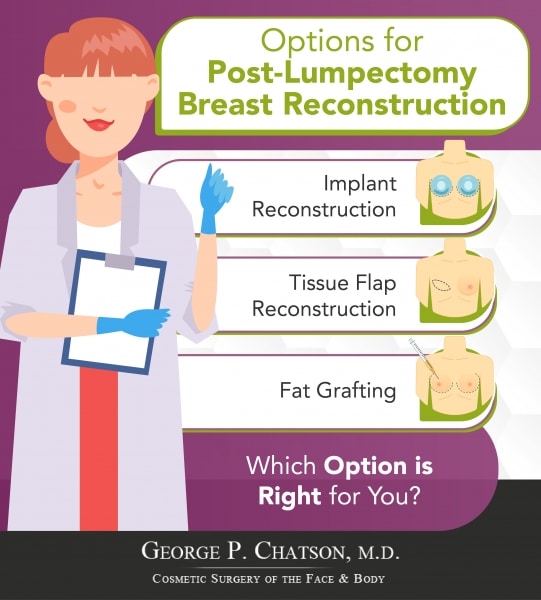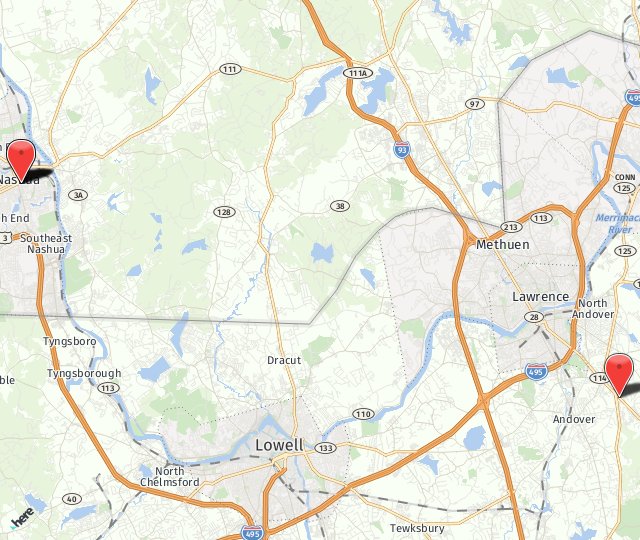Plastic Surgeon Serving North Andover, Boston, Haverhill, MA - Nashua, Salem, Manchester, NH & Nearby Areas
A mastectomy will permanently alter the appearance of your body. This necessary procedure deserves to be applauded for the lives it has saved, but many women are left feeling incomplete after surgery. Breast reconstruction can restore symmetry to your chest, helping you reclaim your body and regain your self-confidence.
Health insurance companies that cover mastectomy are required by congressional law to cover breast reconstruction as well. Procedures to reshape the opposite breast, if needed, are also covered by health insurance. During your initial plastic surgery consultation, one of our experienced staff will discuss your health insurance coverage and breast reconstruction.

If you have had a partial mastectomy, breast reconstruction of the deformity may be possible.
Breast Reconstruction After Mastectomy: Surgery Options
Board-certified plastic and reconstructive surgeon Dr. George P. Chatson will work with you on an individualized basis, tailoring your breast reconstruction to meet your specific needs. Dr. Chatson is experienced in various breast reconstruction techniques, including:
- Implant reconstruction – in which a breast implant is used to restore the breast. Dr. Chatson uses both silicone gel and saline breast implant reconstruction methods. In most instances, gel implants are preferred. A tissue expander may or may not be utilized prior to placement of the breast implant. In some cases, Alloderm tm grafts are used to enhance internal soft tissue coverage around the implant or expander.
- Tissue flap – in which tissue is taken from the abdomen or back to create a new breast. Possible flaps include TRAM flap or latissimus flap.
In some instances, both a tissue flap and implant may be used. This is based on your anatomical features and other physical considerations. Breast reconstruction may be performed as a single step procedure, or it may require several stages of surgical reconstruction. Details about these procedures and any questions about breast reconstruction that you may have are discussed during your initial consultation.
See What Our Patients Are Saying...
Breast Reconstruction After Partial Mastectomy: Surgery Options
A reconstruction plan tailored to your specific breast deformity after partial mastectomy may include one or more of the following techniques:
- Implant reconstruction
- Tissue flap with or without breast implant
- Fat grafting to restore breast shape

Other Breast Reconstruction Considerations
The goal of breast reconstruction is to restore symmetry and balance to your chest. In order to achieve ideal breast symmetry after reconstruction, the opposite breast is often modified during one of the stages of breast reconstruction. When this is the case, Dr. Chatson will recommend a procedure such as a breast lift, breast augmentation, or breast reduction to bring complete balance and symmetry to your upper body. These considerations will be made during your initial consultation. Nipple and areola reconstruction are typically performed after the breast shape has been surgically restored. In some cases, breast cancer surgeons may be able to preserve the patient's own nipple and areola at the time of mastectomy.
Every woman is unique and each body deserves careful attention and personalized services. Dr. Chatson has over 17 years of experience helping women in Massachusetts and New Hampshire restore appearance with breast reconstruction. Tailoring your procedure to meet your needs, he can help you restore natural beauty to your chest.
Schedule a Breast Reconstruction Consult Today!
If you have undergone a mastectomy and live in Andover or Lowell, Massachusetts; Nashua, Salem, or Manchester, New Hampshire; or the surrounding areas, please contact George P. Chatson, MD, online by filling out the Consultation Request Form on this page. You can also call our office in Massachusetts at 978-687-1151 or in New Hampshire at 603-882-2103 to schedule a breast reconstruction consultation today.


